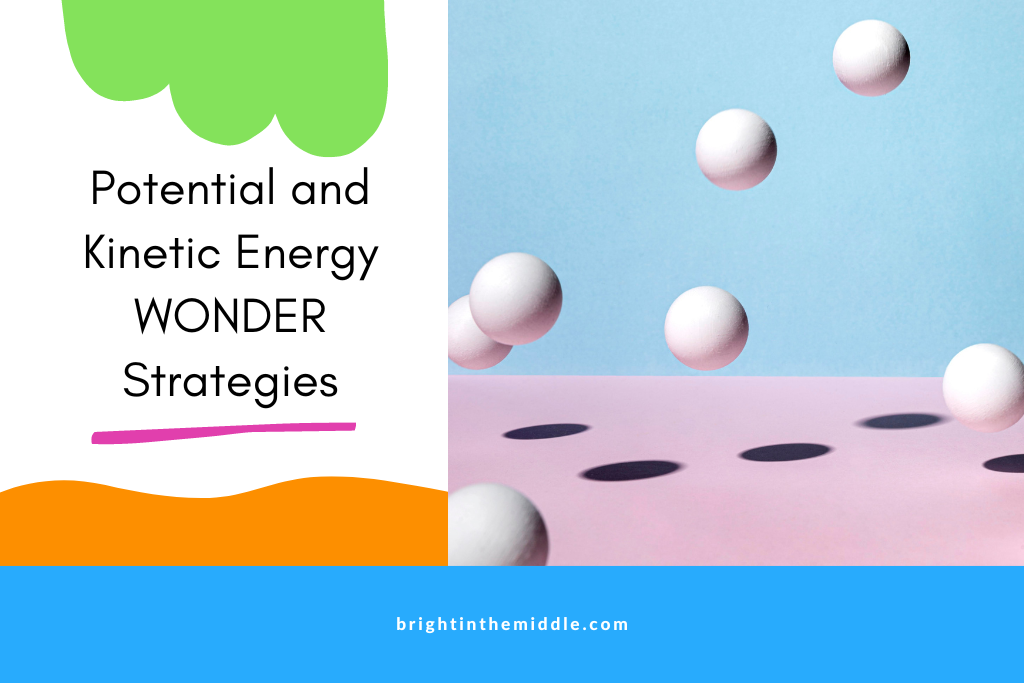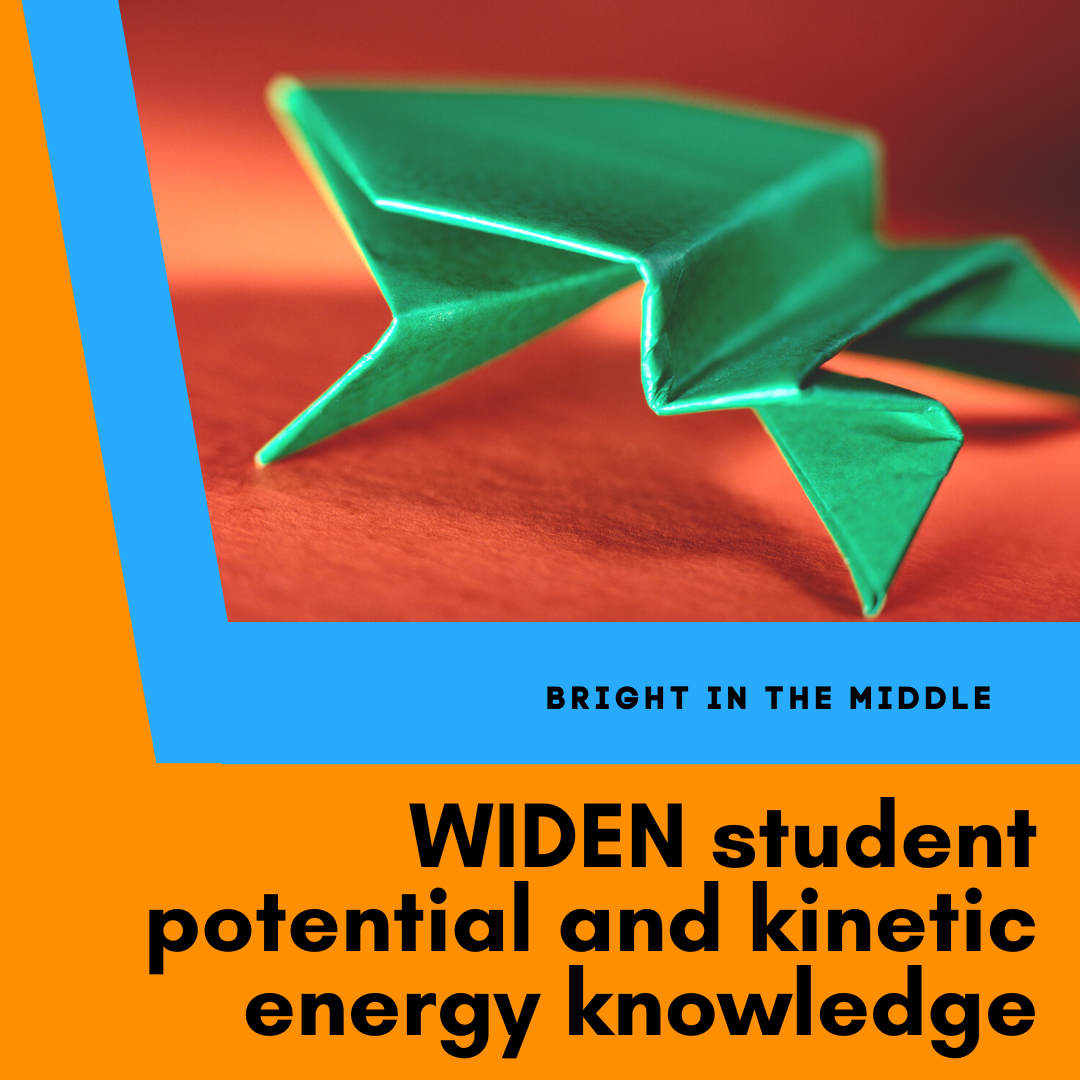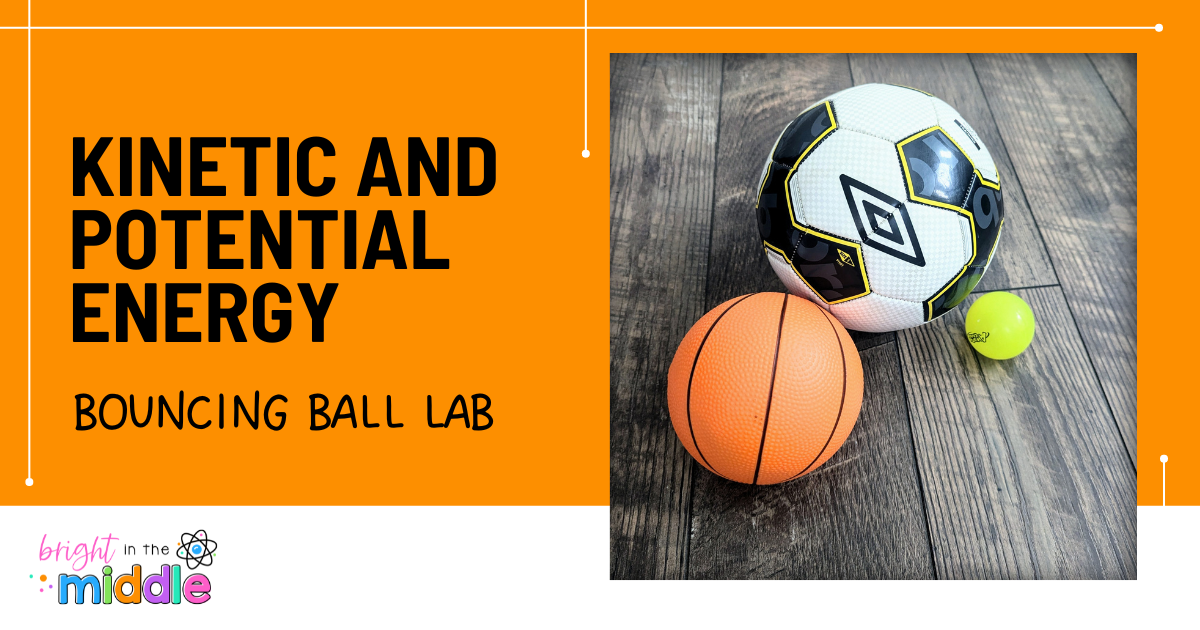So, you are thinking about doing a potential and kinetic energy worksheet, but you want a little something extra! I got you! Now, I must say that Earth Science and Life Science are my jam. If you have been following me for any amount of time, you’ll know this.
You will also know that Physical Science has been growing on me. There are SO many things in our world that involve this amazing science, and one of those things is roller coasters. I absolutely LOVE rollercoasters which makes teaching about potential and kinetic energy SO much fun.
If I only had the time, money, and patience to take my students to an amusement park, that’d be great, but we can just do the next best thing…make a rollercoaster. No time for that? We can pretend we are riding a rollercoaster! We’ll talk more about that later.
In this post, I discuss some ways that you can bring the WOW factor to your classroom while teaching this topic. I discuss ways to get your students wondering about potential and kinetic energy and get excited about learning about it. I discuss ways to dive into the content without overwhelming your students. Finally, I discuss ways to extend and WIDEN their knowledge on this topic.
Let’s go!

Engage Your Middle School Students in Potential and Kinetic Energy
You may have some students like me that are not as interested in the topic, so you have to get them excited about learning it, possibly making it one of their favorite things to learn and talk about. Wouldn’t that be awesome? There are SO many ways to engage your students, so I’ll list some below. Pick your favorite and get started WOWing your students!
Catapult Demonstration
Depending on the amount of time you have, you can have your students to create a catapult, or you can use this as a demonstration. This video is great for showing you how to create your own catapult and gives you some ideas on how you can change some variables to explore!
You’ll need:
- popsicle sticks
- rubber bands
- projectiles such as erasers, marshmallows, ping pong balls, etc.
- target paper
How to make the catapult:
- Stack about 5 popsicle sticks on top of each other and bundle them together using rubber bands on both ends.
- Stack two more popsicles together and only bundle them together on one end.
- Pry the two stick stack open and place the 5 bundle stack inside on the side with the rubber band.
- Secure them using rubber bands.
What next?
- Test it out using one of the projectiles.
- Work to hit different targets.
- Change variables and explore what happens.
- Change angles, tension, mass, velocity…
Keep the kinetic energy and potential energy formulas in the back of your mind when having discussions, but don’t tell students yet! Make them WONDER!
PhET Simulation – Energy Skate Park
If you have iPads, Chromebooks, a computer lab, or something else, letting your students explore a simulation before learning about this topic will be super beneficial!
This simulation explores the conservation of energy, kinetic energy, potential energy, thermal energy, friction, and more!
When you go to the website, there are sample learning goals. Many apply to what you will be learning with your middle school students.
You can have your students explore what they want, but it’s good to start with the basics. Have your students place the skater on the track and just explore. You can have them to explore at their own pace or give them some guiding questions.
They can observe the skater first, then check out the bar graphs, pie charts, speed, and the grid.
- What happens when you place the skater at the top of the track vs. the bottom?
- What happens when you change the mass?
- What happens as you change the different tracks?
- When is potential energy the highest?
- When is kinetic energy the highest?
The possibilities are endless!
World’s Strongest Trampoline Video
What is cooler than bouncing a bunch of watermelons off a giant strong trampoline? Not much!
In this video, Mark Rober and his team create a super strong trampoline, go up high, and drop a bunch of random things onto it to see what happens: watermelons, water balloons, and even a car!
After watching, ask your students some questions.
- What bounced the highest? Why?
- How did the water balloons defy gravity?
- What do you think would happen to an 18-wheeler if it was dropped?
- What about something as small as a tennis ball?
- What questions do you have? (They probably will have a ton after this video, especially with the cliffhanger at the end!)
This video is really neat because he goes into the importance of math in creating designs such as this. This is great because, guess what? Students learn math in this potential and kinetic energy lesson!
If your middle schoolers are the same as mine, they are not so thrilled with the idea that they are doing “math” in “science”. It’s definitely a mindset shift for some that haven’t had this type of interdisciplinary learning in the past.

Favorite Roller Coaster Exploration
This WONDER activity is easy if you just need a quick engagement idea to get your students exciting about learning this topic. Not everyone loves to get on a rollercoaster, but I bet that some, at least, are interested! You can have your students look up their favorite rollercoaster or something that they would be interested in riding.
Just let your students explore in the POV of the rider. You can find tons of videos online! Have them discuss with the partner or the class why they think it’s designed as it is for an optimal enjoyable ride. Think about the hills and such!
Want to ride together as a class? Here are some fun ones!
Replace the Potential and Kinetic Energy Worksheet – Use an Interactive Lesson!
That was fun, right! Now that students are having fun and wondering, they are ready to dive into the content.
What better way to keep the fun going than to using an interactive lesson! This mechanical energy: potential and kinetic energy interactive lesson is GREAT for keeping students engaged while reducing their cognitive load.
How?
This lesson is designed to be broken into chunks while students are applying their knowledge along the way. Practice is built into the lesson. There are also other research-based strategies included to help students remember the content such as highlighting important information, modeling examples, graphic organizers, and more.
Your students will have a blast doing this lesson. There are so many ways that this lesson/activity can be implemented into your classroom to best suit your students needs.
This particular lesson will help your students learn about mechanical energy, work, The Law of Conservation of Energy, joules, potential and kinetic energy, how mass, velocity, and height impact energy, and SO much more! There are many examples of potential and kinetic energy.
How is work related to potential and kinetic energy? Your students will learn this too!
There are fun embedded activities such as drag-and-drop activities, typing in the textbox, and more! It’s why you can skip the potential and kinetic energy worksheet. There are questions inside the lesson!
WIDEN Student Knowledge with these Potential and Kinetic Energy Extensions
By this point, students are HYPE and know SO much. This is where they will have a chance to shine and show off what they know, and in addition, learn more in the process. Here are some things you can do to WIDEN their knowledge.
Create Roller Coasters
This is a great one to do at the end of your energy unit! There are so many options! I like this one from TeachEngineering. Students can explore the potential and kinetic energy of a roller coaster.
You need foam tube (halved), glass, wooden, and steel marbles, paper or plastic cup, a roll of masking tape, markers, crayons or pencils, and blank sheet of paper, a stopwatch, the potential and kinetic energy roller coaster worksheet, and the rubric. Everything is there!
Students are tasked to design a roller coaster. Now is really the time to shine and show off what they’ve learned.
Origami Frogs
Don’t have time to make a roller coaster? What about origami frogs? These are so cute! Students can make one using an index card and these directions.
After they create the frog, have students answer these questions after investigating different ways to make their frog jump.
- What causes your frog to move?
- Where does the energy come from to move your frog?
- Can the amount of energy your frog has be changed to make it jump at different heights and distances? How?
- Does your frog have potential energy? Kinetic energy?
- When does your frog have the most energy? Explain.
- When does your frog have the least energy? Explain.
You can actually make this into a potential and kinetic energy worksheet if you wish!

Potential and Kinetic Energy Lab
If you want to dive deeper into data and calculations, here is a great lab. In this lab, students explore how to calculate potential and kinetic energy with a car rolling down a ramp. Lots of fun!
Bouncing Ball Experiment
This is last on the list, but it’s definitely not the least. This will be your favorite kinetic and potential energy activity! This is another experiment that you can determine if it’s best to do in groups or just as a demonstration. I prefer groups, but you do you!
In this experiment, students will explore how the mass and height of different objects impact potential and kinetic energy (mechanical energy).
You will need:
- lab worksheets (included)
- 3 different-sized balls (per group)
- meter stick or tape measure
- painters tape (optional)
In student groups, you will need at least one person to drop the ball and one person to measure. There are other roles that your students can take on such as the group leader and data recorder.
Depending on time, you can do two different experiments. There are two parts to this experiment.
- First, your students can focus on investigating how the drop height of the ball impacts how high it bounces. In this case, just choose one type of ball and investigate dropping it at 3 different heights.
- Second, your students can focus on investigating how the mass of the ball impacts how high it bounces. This is where you can drop different balls from a set height. Have students record their data and discuss their results.
Why you’ll love this lab:
- Students will see mechanical energy in action.
- It’s hands-on.
- It’s inquiry-based.
- It develops student scientific reasoning through CER.
- It’s customizable.
- There are opportunities for data collection and analysis.
- The work is already done for you.
- and so much more!

So you have made it to the bottom of this post and you still want a potential and kinetic energy worksheet. Guess what? You can actually skip the lab part of this activity, use the answer key data, and have your students complete the CER. It’s a win-win!
Help your students master science content!



[…] Potential and Kinetic Energy […]